
[image source]
Because of some historical evidences many historians and archeologists consider that Petra exists as a settlement since 1500 BC. Approximately 1200 later Nabataeans decided to position their capital city in the region and this resulted in building an outstanding city in 312 BC. The Nabataean kingdom reigned over territories between the Arabian Peninsula and the Sinai Peninsula. Nabataeans were traders in general and their kingdom was practically a network of oases, with main cities like Bostra, Mada’in Saleh and Nitzana. The kingdom was totally conquered by the Roman Empire in 106 AD.
The “Rose City” is presently located in Southern Jordan and was revealed by the Swiss explorer Johann Ludwig Burckhardt in 1812. It has such nickname because it was carved out from rocks with very specific color.
The Nabataean architecture reveals Assyrian, Egyptian, Hellenistic, and Roman trails. Similar to Roman and Greek settlements, the first monumental constructions were several tombs surrounding the city.
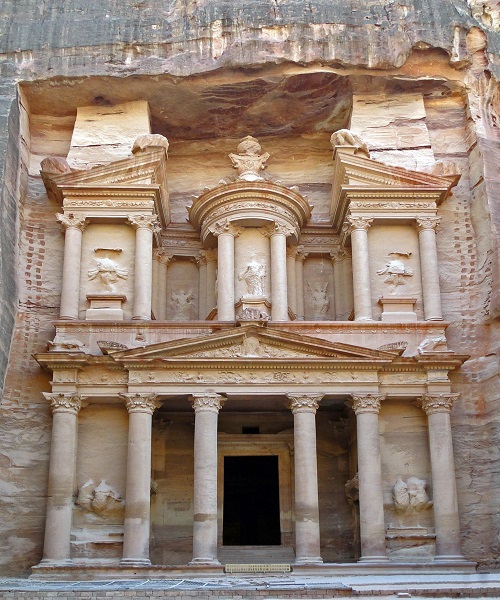
Al Khazneh is considered to be the masterpiece of Nabataean architecture. His Arabic name, The Treasury, belongs to the legend that Arabic thieves hid their treasure on the second level inside a stone urn. It was built with the purpose to be mausoleum and crypt at the beginning of the 1 century AD by King Aretas IV Philopatris.

The Pyramid Tomb is a place where Nabataean king Aretas III (85-62 BC) was buried. This tomb is tall more than 100 feet (40 meters), and incorporates Corinthian and Nabataean columns as well as large friezes, which are carved from solid rock. Several figures decorate the monument, including Nabataean and Greek deities along with characters from Greek mythology.
Titus Aninius Sextius Florentinus was the Roman governor of Arabia, who died around 129 AD. He was buried in Petra by his own request in a tomb much smaller than those of the Nabataean kings. However, it has one of the most complicated ornamentation in Petra. This ornamentation included the carving of several mythological and Roman symbols, such as a Medusa head below an arched pediment with a large eagle above, together with several Nabataean columns and a Latin inscription dedicating the tomb to Titus Aninius Sextius Florentinus.
The Monastery was built for the Nabataean king Obodas III. The tomb has few empty niches which hold statues in the past. The Monastery lacks the carvings and symbolism of the Treasury.

The Nabataeans created incredible water control network that consisted of terraces, canals, piping, and cisterns for supplying the citizens with water and protecting the city from the devastating winter floods. Another part of this network was numerous dams, levees, and aqueducts to transport water from springs located far away from the city.
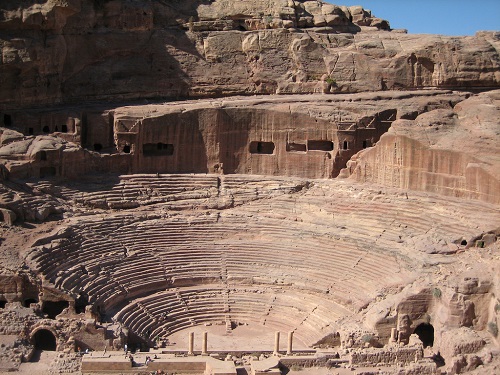
The Greek theater was built during the reign of Aretas IV who was responsible for most of Petra’s other monuments. The great theater followed the Roman standards and provided seats for 5000 people. Several channels were cut above and around the structure to lead the water into reservoirs in case of floods.
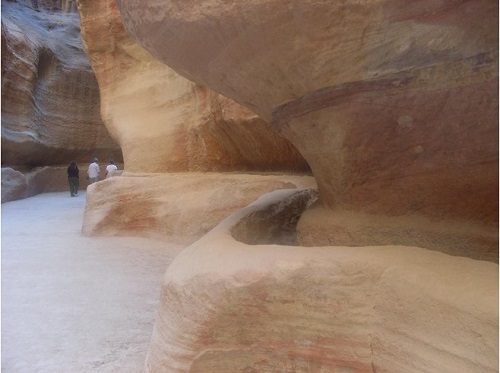
Another famous part of Petra is its colonnaded street, which travels parallel to a stream where water diverted from the surrounding canyons would pass. The street was 18 meters wide and bordered with columns, portals, and many different structures.
The largest of them was the Petra Great Temple, which was also begun during the reign of Aretas.
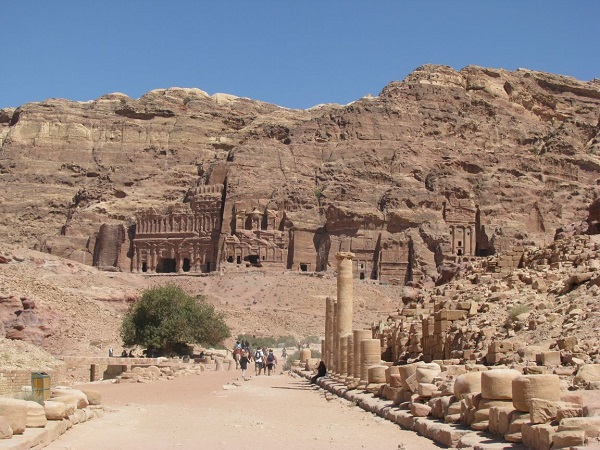
This enormous space located south of the colonnaded street consists of Propylaeum (monumental gateway), a Lower Temenos, and monumental east and west stair ways, which lead to the Upper Temenos.
The Great Temple is the largest free standing building in Petra with measures 35.5 m by 42.5 m, making it 1508.75 square meters.
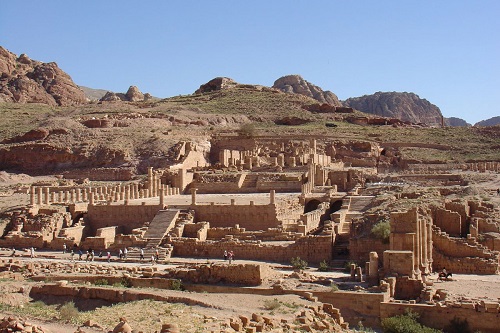
To the east of the Great Temple was a lower terrace which consisted of large pool and garden complex. A large shelf was carved into the rocky slope east of the Great Temple, leaving vertical 16m high walls on the south and east, and 33,280 cubic meters of stone were removed. A 2.5 m deep pool took the center of the place, with an island pavilion included. For the proper functioning of pools and gardens Nabataeans invented system of aqua-ducts, piping, and shallow basins to act as sand and silt filter. Huge amount of cement were used to waterproof the pool, island, and basins, much like the water constructions of the Roman Empire.
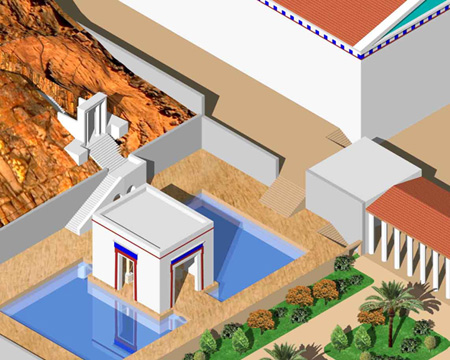
[image source]
Author: Kostadin Kostadinov
Tags News
 Constructionshows
Constructionshows